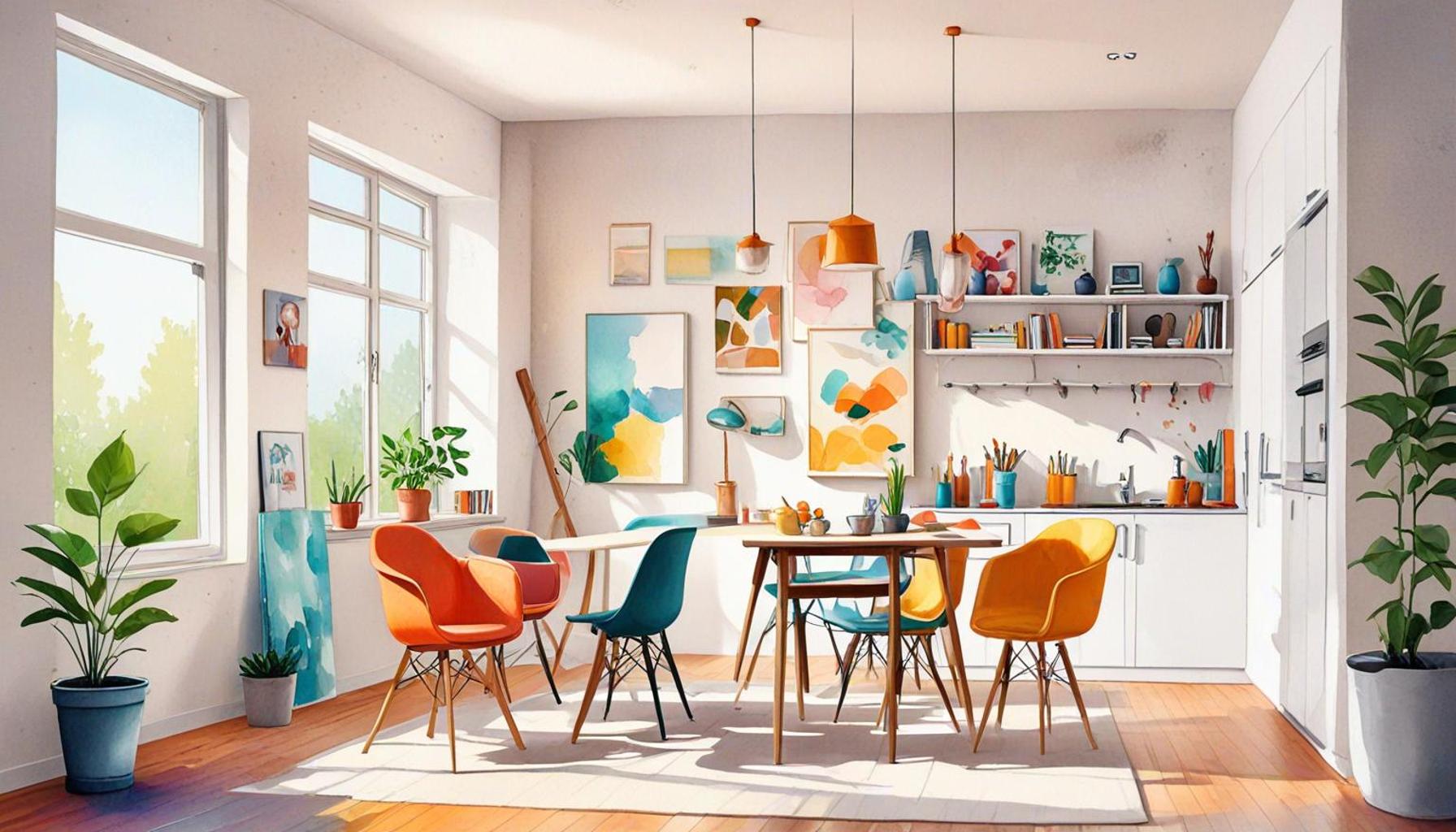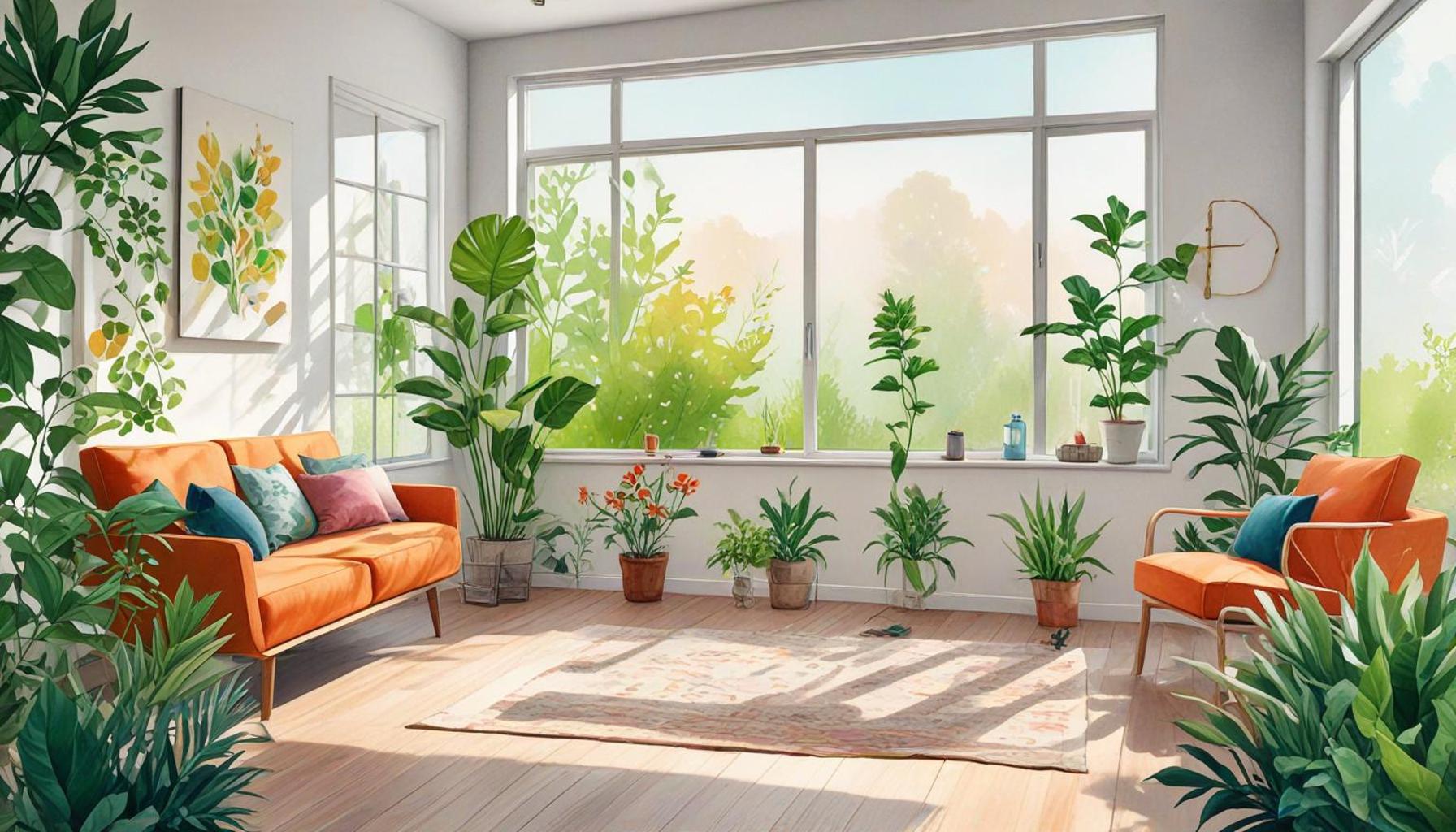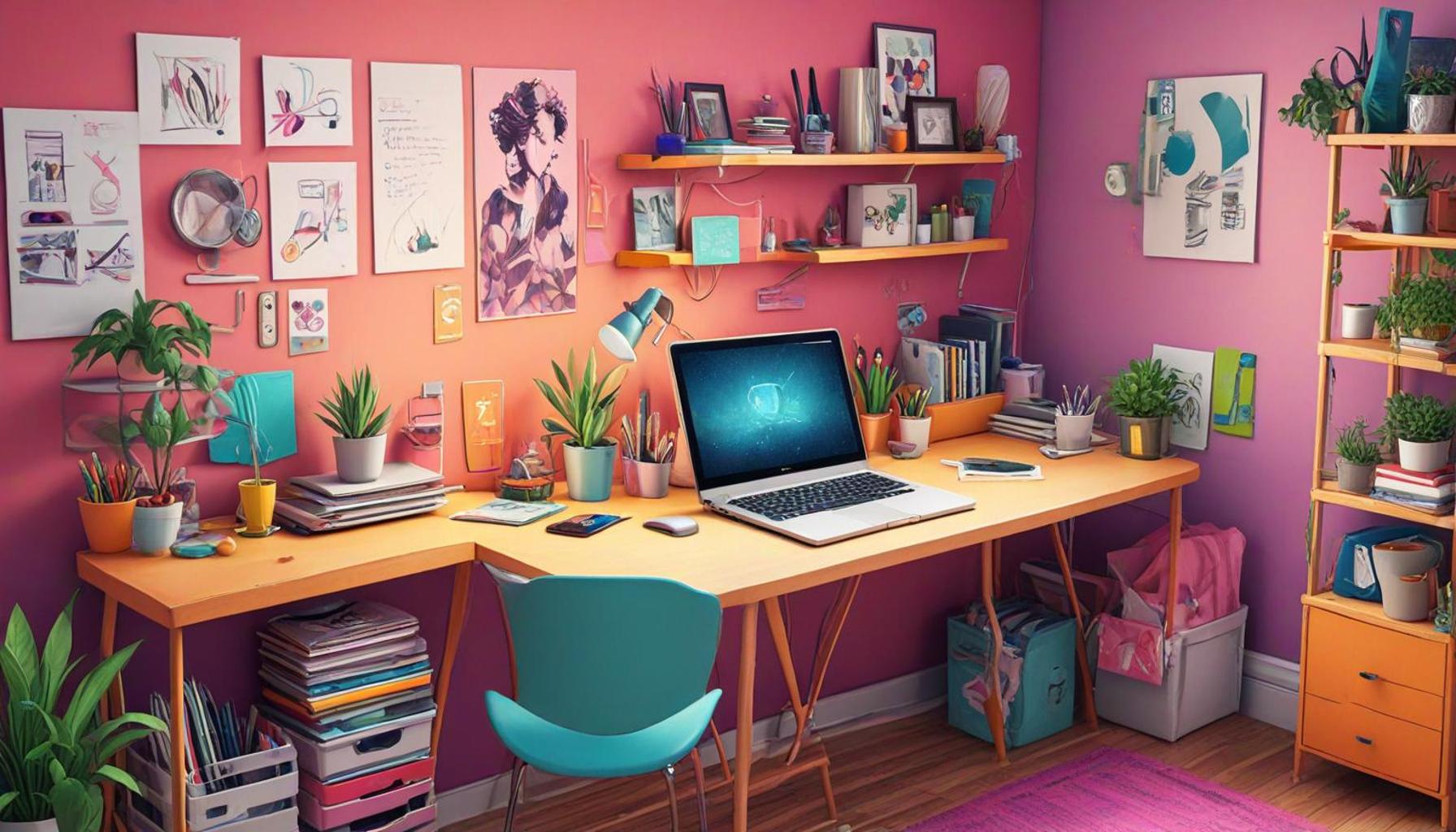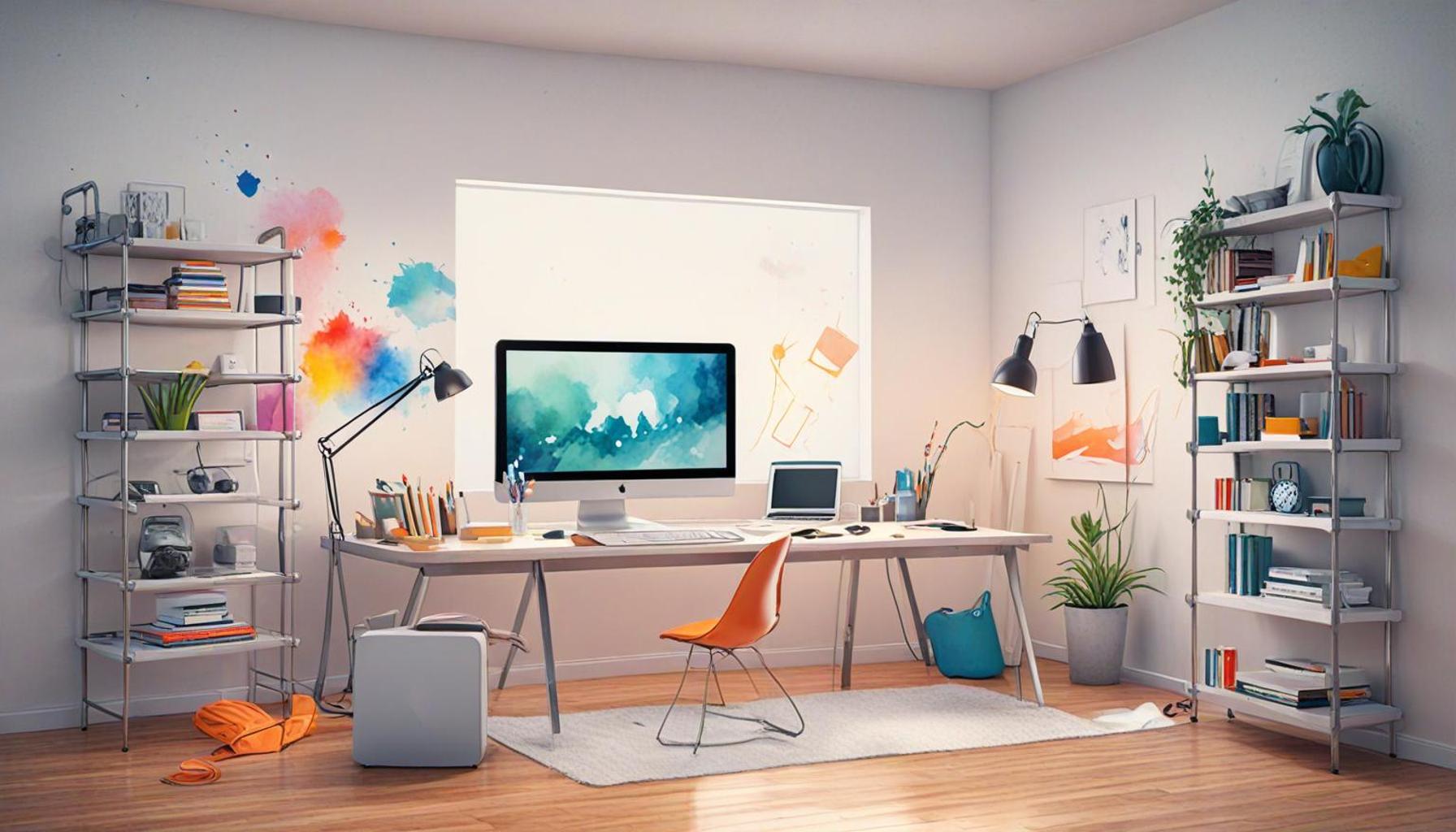Creating Multi-Functional Spaces: Maximizing Efficiency in Minimalist Living

Understanding Multi-Functional Spaces
In a rapidly changing world, individuals are rethinking their living spaces to meet the demands of modern life. One innovative approach gaining traction is the concept of multi-functional spaces, which is particularly vital in densely populated urban areas. These spaces are designed to perform more than one function, allowing homeowners to maximize every square foot without compromising on comfort or style.
Central to creating multi-functional spaces is the idea of transformable furniture. This type of furniture can switch roles to adapt to different activities. For example, a sofa bed provides a cozy seating area during the day, transforming effortlessly into a comfortable sleeping space at night. Similarly, an ottoman with built-in storage can serve as both extra seating and a stylish place to hide away blankets or magazines, promoting an organized environment. This flexibility not only enhances functionality but also contributes to a visually appealing atmosphere by minimizing clutter.
Smart storage solutions are another essential component of multi-functional space design. Utilizing vertical space through shelves or wall-mounted cabinets can free up floor area for movement, while also displaying personal treasures or books in an aesthetically pleasing way. Hidden compartments in furniture such as beds or coffee tables provide discreet spots to store items like seasonal decorations or spare electronics, maintaining a clean and serene living environment.
The importance of defined zones should not be overlooked. A well-designed multi-functional space incorporates areas dedicated to work, relaxation, and entertainment without sacrificing flow. For instance, a corner of a living room could be turned into a home office with a compact desk and ergonomic chair, seamlessly blending work and leisure spaces. By ensuring each zone is distinct yet cohesive, residents can enjoy a balanced lifestyle that accommodates various needs.
As more people embrace minimalist living, the idea of optimizing space fosters a sense of creativity and innovation in home design. It compels individuals to evaluate their furniture choices, layout strategies, and personal possessions, leading to a more efficient and tranquil environment. The journey toward minimalism can be both exciting and rewarding, unveiling endless potential within limited square footage.

In this exploration of multi-functional design, we will uncover practical tips and inspiring examples that highlight the beauty and effectiveness of minimalist principles. Discover how to redefine your living areas for a balanced and efficient lifestyle, inviting comfort and utility into every corner of your home.
DISCOVER MORE: Click here to learn how intentional design can enhance your life
Designing Your Multi-Functional Oasis
To effectively create a multi-functional space, it’s essential to carefully consider your specific needs, the activities that will take place in each area, and how to optimize the layout without creating chaos. Thoughtful planning combined with innovative design concepts can turn even the smallest living area into a versatile haven. Here are key strategies to get you started on this transformative journey:
Prioritize Versatile Floor Plans
The layout of a room can significantly impact its overall functionality. Open floor plans allow for seamless transitions between work, play, and relaxation zones, fostering a sense of freedom and spaciousness in a compact environment. Consider using area rugs or furniture placement to visually define different sections of a room without closing off space. In urban apartments, where square footage often dictates living conditions, flexibility becomes crucial. By designing fluid spaces that adapt to your lifestyle, you can create a harmonious atmosphere that nurtures creativity and organization.
Incorporate Transformative Features
As mentioned earlier, transformable furniture plays a central role in maximizing the utility of living spaces. However, think beyond sofas and ottomans. Here are more innovative ideas to consider:
- Murphy beds: These foldable beds allow rooms to transform from a bedroom to a living area in seconds, making them ideal for studio apartments.
- Expandable dining tables: Perfect for hosting gatherings, these tables can adjust in size to accommodate more guests without taking up space when not in use.
- Desk converters: Standing desks or adjustable-height desks not only promote better posture but also facilitate a quick switch between work modes, encouraging productivity.
- Modular seating: Sectional couches that can be rearranged or individual pieces that can serve various purposes provide flexibility when entertaining.
Incorporating these transformative features ensures that your space can adapt to your needs as they evolve, crafting an environment that suits both current lifestyles and future aspirations.
Utilize Multi-Purpose Decor
Decor plays a vital role in establishing the ambiance of your living space while also serving practical purposes. Consider the following decorative tips that merge form and function:
- Accent mirrors: Use mirrors to create an illusion of more space and reflect natural light, brightening up compact areas.
- Wall art with storage: Consider decorative wall-mounted hooks or shelves that can display art and efficiently store items like keys or bags.
- Textiles: Layering textiles can enhance comfort; think about throw blankets that are not only aesthetically pleasing but also serve as functional elements for warmth.
With these strategies in mind, the journey toward creating a multi-functional living environment can unfold smoothly, allowing you to maximize efficiency while embracing minimalist living. Each choice can contribute to a space that feels expansive, comfortable, and uniquely yours. As you delve deeper into this design philosophy, the possibilities are endless, making your home not just a place to live, but truly a reflection of your lifestyle.
Creating Multi-Functional Spaces: Maximizing Efficiency in Minimalist Living
In the quest for a minimalist lifestyle, the concept of multi-functional spaces takes center stage. This innovative approach not only conserves physical space but also enhances the overall utility of living areas. When a room serves multiple purposes, residents can simplify their lives while enjoying greater flexibility. Imagine a living room that seamlessly transforms into a home office or a guest bedroom that doubles as a gym. This functionality ensures that every square foot is optimized, reducing clutter and promoting a serene environment.
One practical application of multi-functional spaces is through the use of transformable furniture. A sofa bed, folding tables, and storage ottomans can all contribute to a versatile living space. Furthermore, the strategic placement of built-in shelves and wall-mounted workstations can hide away personal items and work equipment, maintaining the visual cleanliness of a minimalistic design.
The beauty of designing multi-functional spaces lies in the ability to customize environments according to personal needs. For instance, a corner of the kitchen can be equipped with a small breakfast nook that could also serve as a reading area, complete with comfortable seating and adequate lighting. Such arrangements exemplify how efficiency and aesthetics can coexist in minimalist living.
As more people embark on their minimalist journeys, understanding the principles of multi-functional spaces becomes essential. This not only proves beneficial for those looking to downsize but also for individuals aiming to create smarter, more efficient homes tailored to their hectic lifestyles. Ultimately, embracing this design philosophy paves the way for a more organized and fulfilling living experience.
| Advantage Category | Details |
|---|---|
| Space Optimization | Utilizes every inch of the living area effectively. |
| Enhanced Functionality | Variety of uses within a single space increases its value. |
This exploration into how to create multi-functional spaces sheds light on current trends in minimalist design. Adopting practical strategies allows for maintaining an organized and aesthetically pleasing home while accommodating the dynamic needs of daily life.
DIVE DEEPER: Click here to discover more about intentional design
Emphasizing Smart Storage Solutions
One of the biggest challenges in achieving a minimalistic lifestyle is the necessity for effective storage solutions. In smaller or multi-functional spaces, clutter can quickly become overwhelming, counteracting the tranquil ambiance you desire. Thus, thoughtful storage is essential in ensuring organization and functionality without sacrificing style. Here are some clever storage strategies to keep your space tidy:
Think Vertical
To maximize every inch of your living area, vertical storage should be a priority. Wall-mounted shelves not only display your personal items and decor but also free up floor space, creating a more spacious feel. Bookcases or floating shelves can transform walls into functional focal points, providing opportunities for curation and creativity.
Consider utilizing the area above door frames and windows for out-of-reach shelves where less frequently used items can be stored. Decorative storage bins or baskets can also enhance your decor while keeping miscellaneous items organized. This approach maintains an uncluttered aesthetic while optimizing available space.
Multi-Functional Solutions for Every Space
Every piece of furniture in a multi-functional setup should be evaluated for its usefulness. Items that serve dual purposes help to maintain a minimalist approach while meeting everyday needs. Emphasize pieces like:
- Storage ottomans: These serve as extra seating, footrests, or a coffee table while also offering hidden storage.
- Bed frames with drawers: These solid pieces not only support a great night’s sleep but also store linens and seasonal clothing without occupying additional space.
- Convertible couches: Sofas that can morph into beds provide ideal solutions for accommodating guests overnight without needing a dedicated guest room.
Each functional piece ensures that your space can easily transform depending on the occasion, reinforcing efficiency and versatility.
Declutter Regularly
Creating and maintaining a multi-functional space requires an ongoing commitment to decluttering. A powerful principle to adopt is the “one in, one out” rule—every time you bring a new item into your home, an old item should be removed. This practice not only minimizes clutter but also fosters intentionality in your possessions.
In addition, scheduling regular audits of your belongings helps to keep your space streamlined. After every season, evaluate items in storage, closets, and common areas, donating or discarding things that no longer serve a purpose or bring joy. Remember, a minimalist lifestyle thrives on simplicity, and part of maximizing efficiency is letting go of what you no longer need.
Embrace Smart Technology
Integrating smart technology into your multi-functional space can significantly enhance efficiency and convenience. From smart speakers that control lighting and music to apps that help you manage your calendar and productivity, technology can simplify daily routines and keep your living environment synchronized.
Consider smart storage solutions like app-controlled storage bins that remind you of what’s inside or RFID tags that help track items around the house. With these innovations, staying organized becomes more attainable, and it promotes a streamlined approach to minimalist living.
By strategically combining these principles of smart storage, thoughtful furniture choices, and high-tech solutions, you can create a multi-functional oasis that promotes both efficiency and a clutter-free lifestyle, simplifying your home while enriching your everyday experiences.
DISCOVER MORE: Click here for insights on creating minimalist spaces
Conclusion
In the pursuit of a minimalist lifestyle, creating multi-functional spaces emerges as a transformative approach that maximizes efficiency without compromise. The principles discussed throughout this article—embracing smart storage solutions, selecting versatile furniture, regular decluttering, and leveraging smart technology—form the cornerstone of a well-organized and functional home. By reimagining spaces and adopting a thoughtful mindset towards our belongings, we can enhance not only the aesthetic appeal of our environments but also their functionality.
The integration of vertical storage and multi-purpose furniture equips us to navigate our daily lives with ease, while the discipline of regularly assessing our possessions ensures we maintain a streamlined atmosphere. Moreover, the advent of smart home technology offers innovative ways to manage and optimize our spaces, bringing an additional layer of convenience to minimalist living.
Ultimately, the journey towards maximizing efficiency in your living environment is rooted in intentional living. As you explore the potential of your home, consider each adjustment and addition not merely as a design choice, but as a step towards a more manageable, peaceful, and meaningful life. So take that leap—embrace the essence of minimalism and let your space reflect the tranquility and efficiency that comes with it. With these insights, you are well-equipped to craft your own multi-functional haven, transforming any space into a true reflection of your lifestyle aspirations.


